With rapid improvement in China’s mobile internet access, social apps have become an ever-more indispensable part of users’ lives. Many Internet-related enterprises have entered into this field, facing the ever-changing needs and habits of users and in the process greatly impacting the development of social software and apps.
The following is an overview of the state of mobile social applications, users, marketing, and mobile e-commerce.
China Social Mobile App User Overview
As of May 2017, the number of mobile social app users in China is rapidly approaching 590 million, according to data from iResearch looking at the number of distinct devices using these apps.
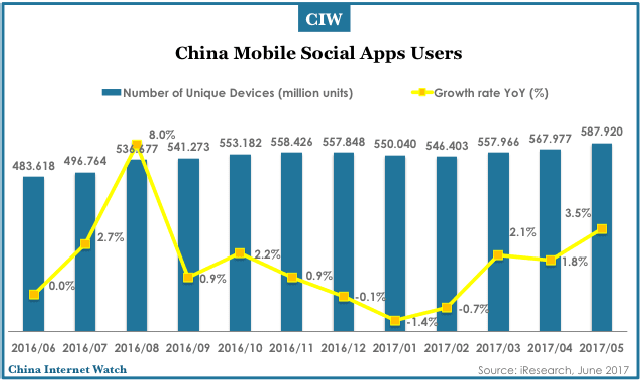
The same research reveals that the amount of time users spend on social apps is relatively constant, varying between 4.09 billion minutes in June 2016 to 5.26 billion minutes in December 2016.
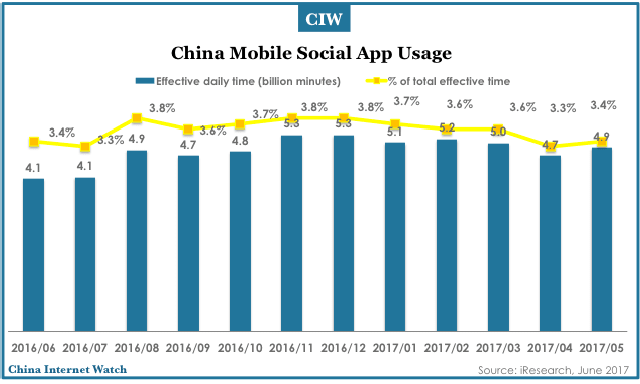
Acquire, convert, and retain customers through WeChat Ads + WeChat Work
Demographics
Social media and social app users in China skew differently than China’s demographics in terms of age, while maintaining similarity in gender ratio.
Social media users are 55.1% male (vs. 53% male for all of China) but are concentrated among younger demographics, with more than half of users being under 30 years old and more than three-fourths under 35.
While 23.1% of Chinese internet users are over 40, only 4.3% of social app users are. Among female users, 46.3% are married with children, 33.7% are single, and 12.7% are in relationships.
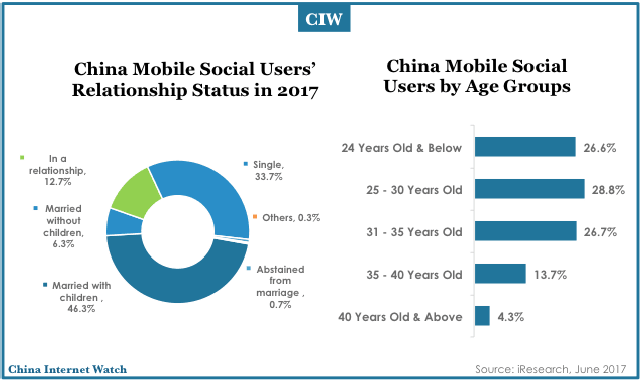
Geography
Social app users are strongly concentrated in the more populated, developed eastern provinces and cities; six regions, namely Guangdong (11.5%), Zhejiang (11.26%), Shanghai (10.47%), Shandong (8.9%), Beijing (8.7%), and Zhejiang (5.6%), collectively account for over half of all users in China.
Certain areas also have hugely skewed ratios between male and female users; Beijing has 2.67 male users for each female user, while Guangdong and Shandong have 1.9.
Income and education
User demographics also differ hugely from the country’s in terms of education and income. In 2017, over half of all users held bachelor’s degrees (55.5%), followed by associate’s degrees (19.5), and master’s degrees or MBA’s (9.8%).
More than half of users had incomes between 3,000 and 8,000 yuan per month, with roughly 20% below that range and 30% above. To compare, more than 60% of Chinese internet users have monthly incomes under 3,000 yuan.
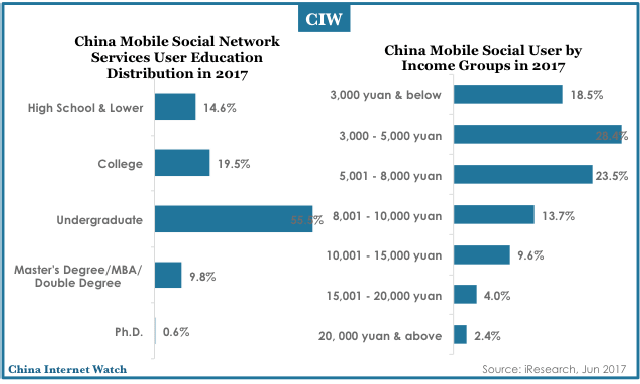
New users
Data clearly shows that most new users find out about social apps through recommendations from friends (68.2%). Next to this, recommendations from app stores and advertising on social media apps are the next most common sources of new users.
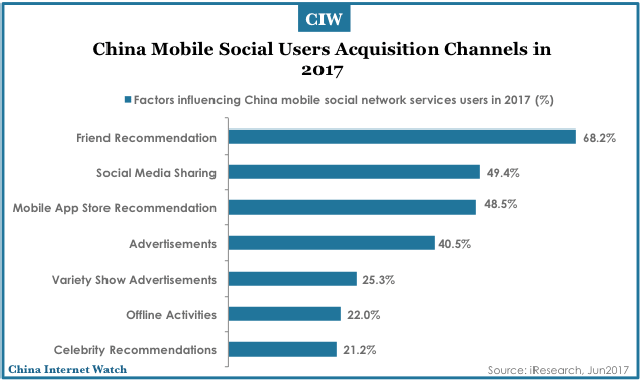
Top 10 WeChat Moments ads in 2019, voted by 1+ million users
Behaviors of China Mobile Social App Users
How many apps?
Only a relative handful of users have just one social app; users with two and three apps, respectively, both account for roughly a third of all users. Users with more than three account for around another fourth.
It was also noted that users with multiple apps were most likely to maintain accounts with general social, interest-related, and photo-related apps (equivalent to an American user with Pinterest, Twitter, and Flickr accounts).
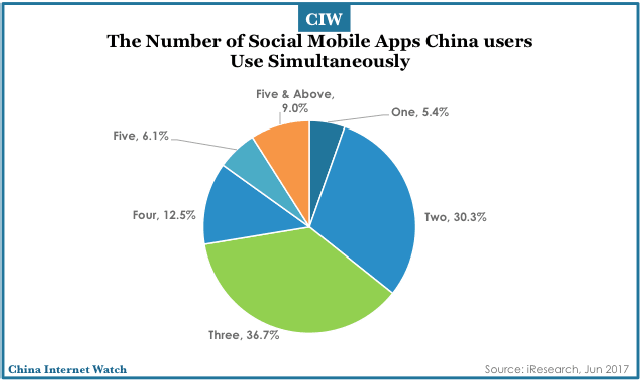
Which apps?
User surveys show a clear preference for general or integrated social networking apps, with 40.1% saying that they use one of these most frequently. Interest-based, business, and dating network apps were also attractive.
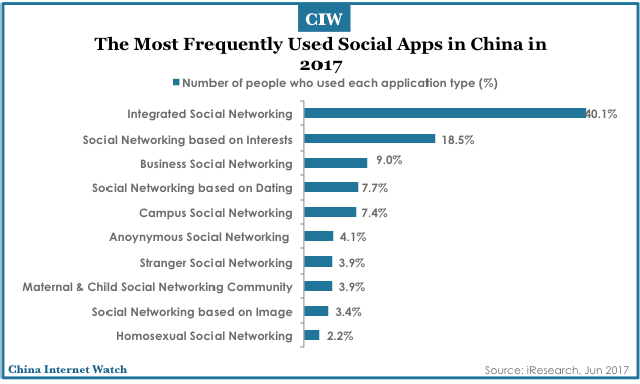
The majority of users choose a few select apps to post status updates, while approximately a quarter use just one app and a smaller proportion post different statuses in different apps.
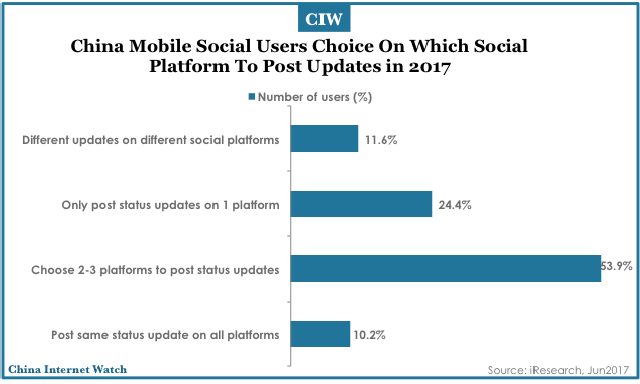
How often?
80.8% of users post at least weekly; of these, 8.2% say they post more than three times daily. Their motivations vary as well; 38.1% said they post to share their lives with their friends, 25.2% post to express their feelings and emotion, and 10.9% want others to know more about them.
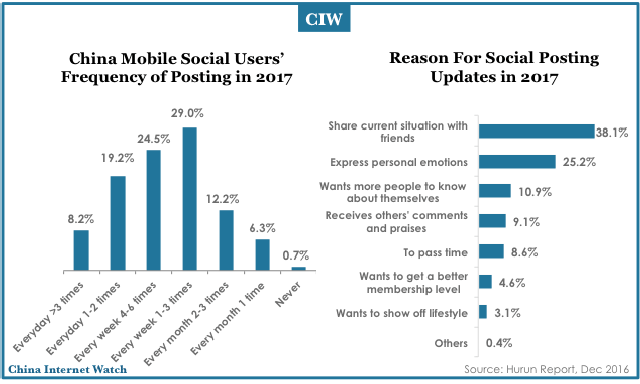
Why?
Most social app users in China say they use the apps to make new friends, with 70.8% citing this as an important motivation, and 28.4% as their most important motivation. Learning was users’ second choice, with 63.1% saying it was a motivation, and 16.7% saying it was the most important motivation.
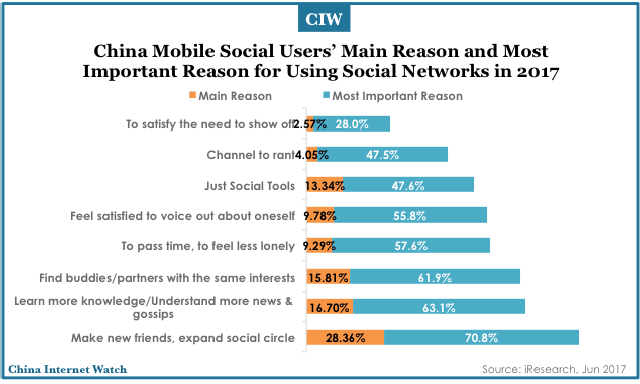
When and where?
Users report that their most common use times and sites are “while resting at home” (72.9%), “before sleeping” (59.0%), and “while taking public transport” (56.1%), suggesting that most users view social media as a form of relaxation or leisure.
Interestingly, male users were more likely to report using social apps at the gym, in the shower, or before getting out of bed.
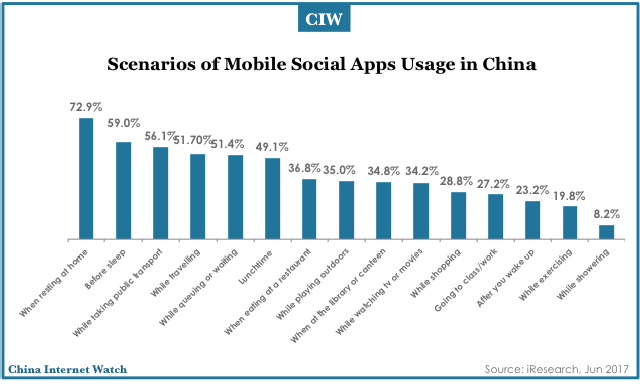
How long?
Nearly half of users report using social apps at least three times a day, and well over 90% use them every day. In addition, more than 80% report that they are online at least one hour each day.
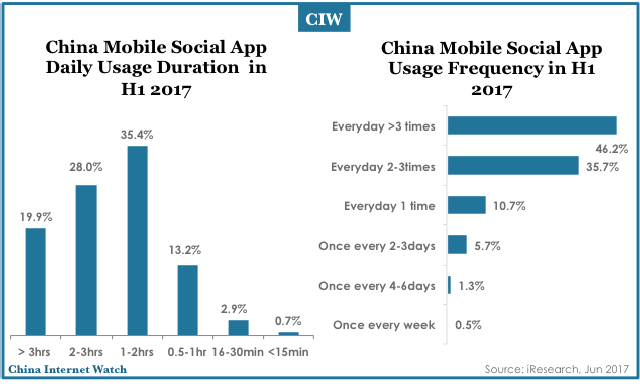
More or less?
Regardless of whether users are increasing or decreasing their use, they uniformly report that the first reason for doing is because of the content found on social apps; among users who were increasing use, 65.32% said content was becoming richer, while 50.59% of users who were decreasing use did so because of a lack of interesting content. To users, it seems that content is among the most important factors impacting their use.
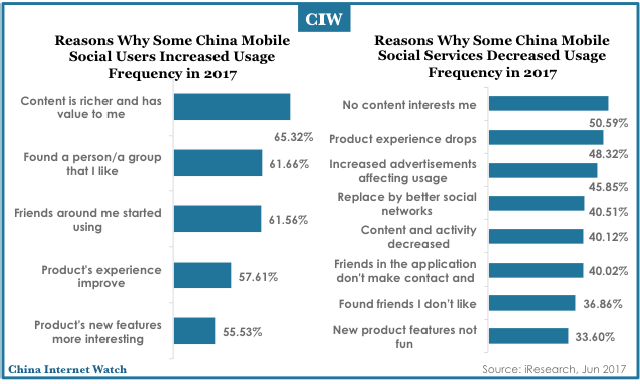
Offline friendships
Social app users also report a wide variety of circumstances surrounding their online-offline friendships. 81.6% say they’ve made friends online, but only roughly one-sixth say that they have made many friends online and meet with them frequently offline.
Around 60% say they’ve joined offline gatherings or events they discovered online, and another 29% say they would like to do so.
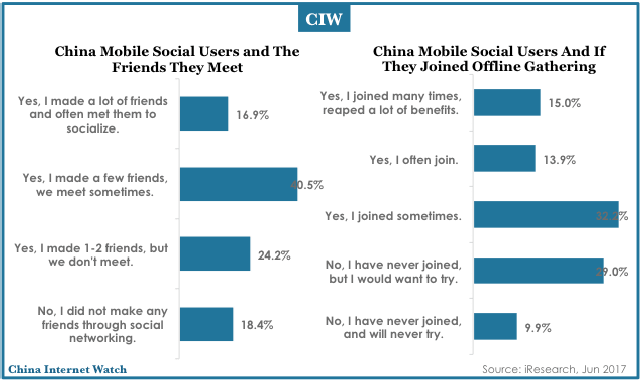
Social Ads
Social media advertising is growing even more rapidly than social app penetration in China; the total market for social advertising is expected to reach 81.8 billion yuan in China in 2019, from an existing base of 24.0 billion yuan in 2016, with average annual growth of over 50%.
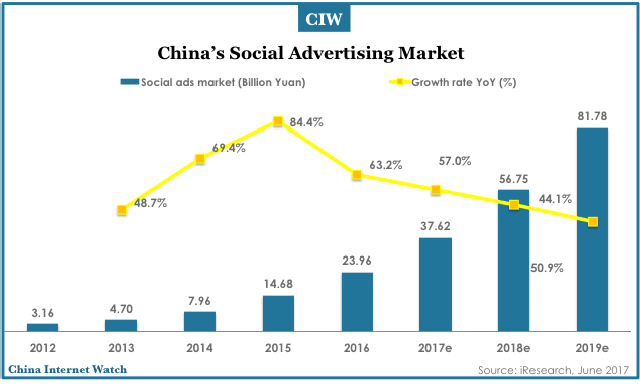
User attitudes
Most users are relatively understanding towards online advertising on social sites and apps. 52.4% of users said they were at least somewhat of advertising on social apps, thinking it was an acceptable way for those sites to earn money; 14.9% were favorably disposed towards advertising, thought it was frequently creative, and even left comments to improve effectiveness.
According to iResearch, in recent years the effectiveness of social advertising has been increasing, becoming one of the most effective tools in the online marketing toolbox.
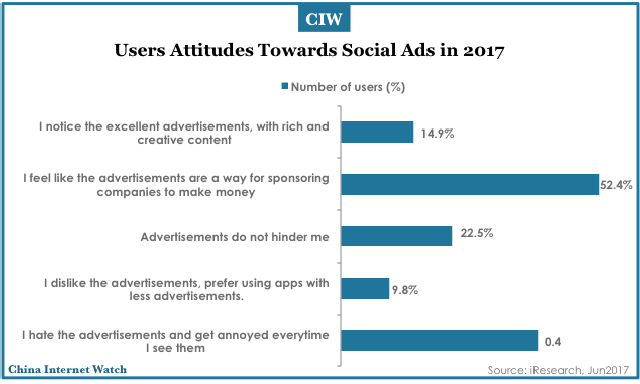
Effective advertising
Research and surveys suggest that the most effective ad campaigns are multimedia-based ones, in which video features prominently. 60.2% of users report having noticed one such ad, and 32.3% report having clicked through one to learn more. Beyond this, other effective advertising methods include ads placed in news feeds, QR codes, and advertising for events.
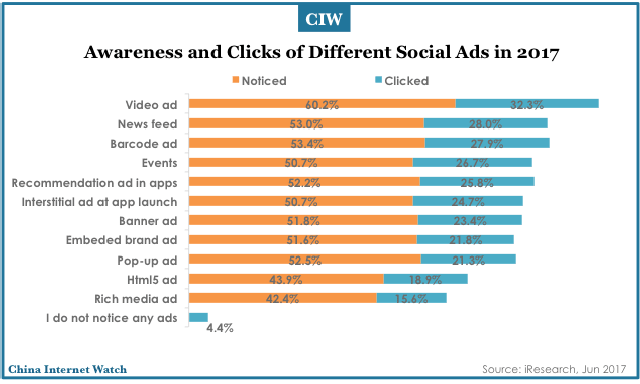
Regarding news feed advertising, 50.4% of users report preferring it to traditional advertising placed in search sites or banner ads; 15.5% said they dislike both forms of advertising.
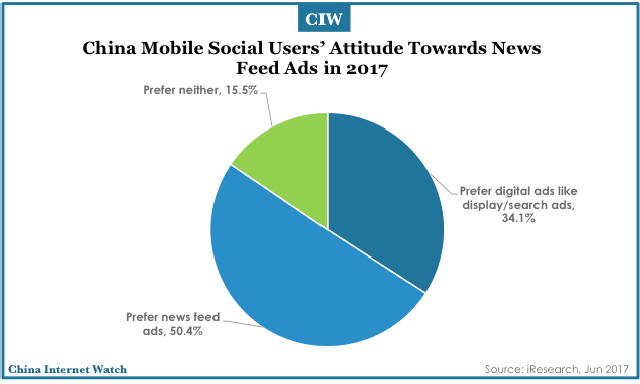
More than half of users reported liking news feed ads more if they incorporated video, photos, or gifs, while 48.5% had favorable feelings towards HTML5 ads.
Nonetheless, the most important factors in determining whether users liked an ad had more to do with content and product representative than format; 26.5% said they would only pay attention if the product was relevant to them, 21.3% said they paid more attention if they liked the celebrity sponsor, and 19.2% liked creative advertisements.
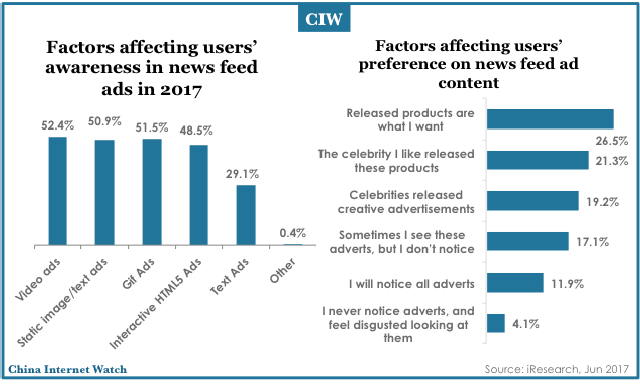
The majority of users prefer ads to appear at most once per day.
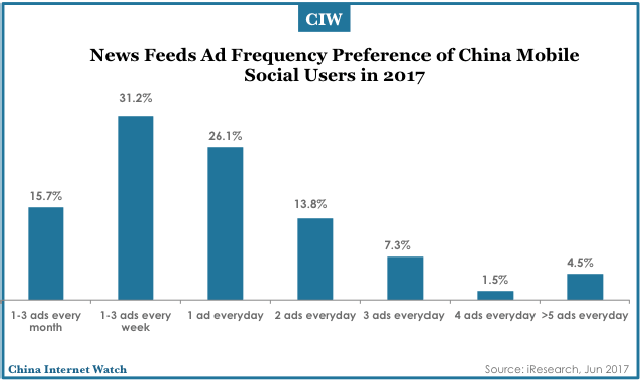
PURCHASES
55% of users reported having bought or paid for goods or services on a social app, and of those who have made purchases, more than half were between 50 and 250 yuan, with more than 90% below 1000 yuan.
Given the available data, iResearch believes that most consumers have accepted social app advertising as a valid source of product information, but to expand high-end orders, it will need to improve its reputation for reliability and quality.
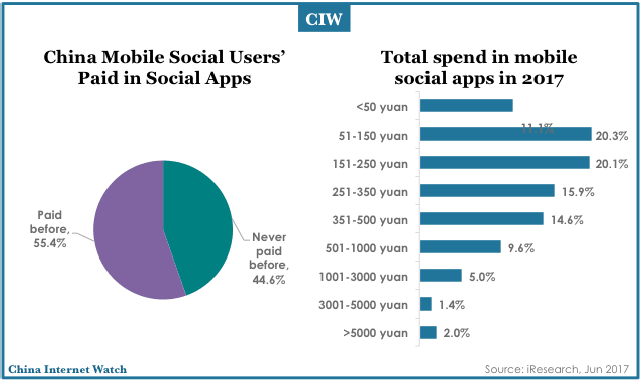
Users reported that friends’ recommendations had a greater influence on their purchasing decisions than any other factor, but the second and third most important factors were the degree to which they trusted the social app and advertising thereon and whether the ads were relevant to them.
This phenonmenon suggests that improvements social apps and social advertising can go a long way towards increasing advertising effectiveness.
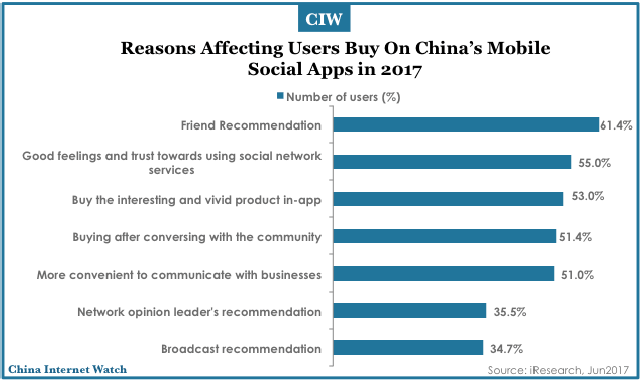
How Xiaohongshu successfully pivoted its growth and product strategies